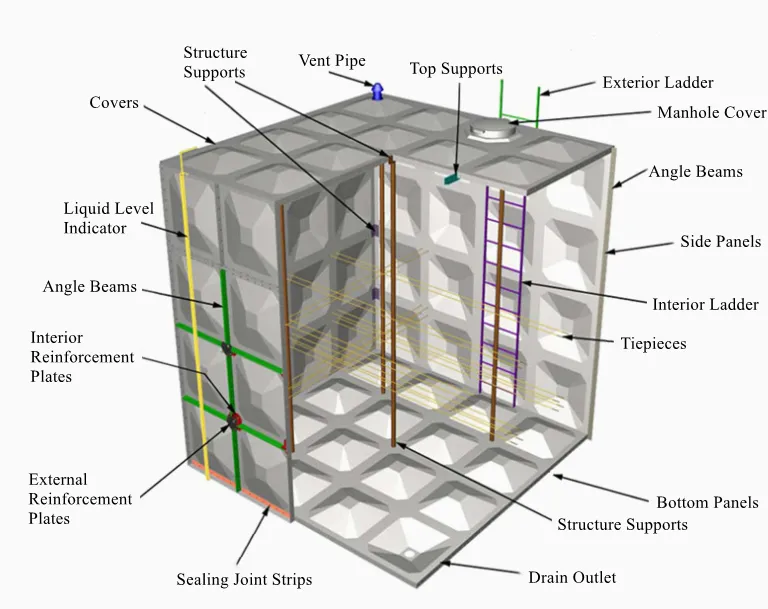loading...
- No. 9, Xingyuan South Street, Dongwaihuan Road, Zaoqiang County, Hengshui, Hebei, China
- admin@zjcomposites.com
- +86 15097380338
- Welcome to visit our website!
frp water storage tank
FRP Water Storage Tanks A Comprehensive Overview
FRP (Fiber Reinforced Plastic) water storage tanks have gained widespread popularity due to their durability, versatility, and resistance to a variety of environmental conditions. These tanks are composed of a combination of plastics, fiberglass, and resin, resulting in a lightweight yet strong structure suitable for various applications, including agricultural, industrial, and municipal water storage.
One of the key advantages of FRP water storage tanks is their outstanding resistance to corrosion. Traditional materials such as steel and concrete often suffer from rusting and degradation when exposed to water and environmental elements. In contrast, FRP tanks do not corrode, ensuring a longer lifespan and reducing the frequency of maintenance and replacement. This characteristic makes them ideal for storing water in harsh environments, where traditional materials might fail.
FRP Water Storage Tanks A Comprehensive Overview
The versatility of FRP tanks cannot be understated. They can be manufactured in a variety of sizes and shapes to suit specific needs. Whether it's for residential use or large industrial projects, FRP tanks can be customized to meet capacity requirements. Additionally, FRP can be molded into various geometric shapes, allowing for creative solutions in space-constrained environments.
frp water storage tank

Insulation is another critical factor to consider in water storage. FRP tanks can be designed with insulating properties, which help to maintain the temperature of the stored water. This is particularly important in regions with extreme temperatures, preventing the water from freezing in winter or overheating in summer. Maintaining a stable temperature also contributes to better water quality, as fluctuations in temperature can lead to bacterial growth and other contaminants.
In terms of environmental impact, FRP tanks are often more eco-friendly than their traditional counterparts. The manufacturing process for FRP can be less demanding on natural resources, and the longevity of these tanks means fewer materials are needed over time. Additionally, many companies are adopting sustainable practices in the production of FRP tanks to minimize waste and energy consumption.
Moreover, the smooth interior surface of FRP tanks reduces the likelihood of sediment buildup, which is a common problem with other tank materials. This feature makes them easier to clean and maintain, ensuring that the water stored remains clean and safe for use.
In conclusion, FRP water storage tanks offer a multitude of benefits, making them a preferred choice in numerous applications. Their resistance to corrosion, lightweight design, versatility, insulating properties, and lower environmental impact are just a few of the reasons why they are favored in water storage solutions today. As industries continue to seek reliable and sustainable options for water management, FRP tanks are poised to play a significant role in the future of water storage.
-
The Rise of FRP Profiles: Strong, Lightweight, and Built to LastNewsJul.14,2025
-
SMC Panel Tanks: A Modern Water Storage Solution for All EnvironmentsNewsJul.14,2025
-
GRP Grating: A Modern Solution for Safe and Durable Access SystemsNewsJul.14,2025
-
Galvanized Steel Water Tanks: Durable, Reliable, and Ready for UseNewsJul.14,2025
-
FRP Mini Mesh Grating: The Safer, Smarter Flooring SolutionNewsJul.14,2025
-
Exploring FRP Vessels: Durable Solutions for Modern Fluid HandlingNewsJul.14,2025
-
GRP Structures: The Future of Lightweight, High-Performance EngineeringNewsJun.20,2025
